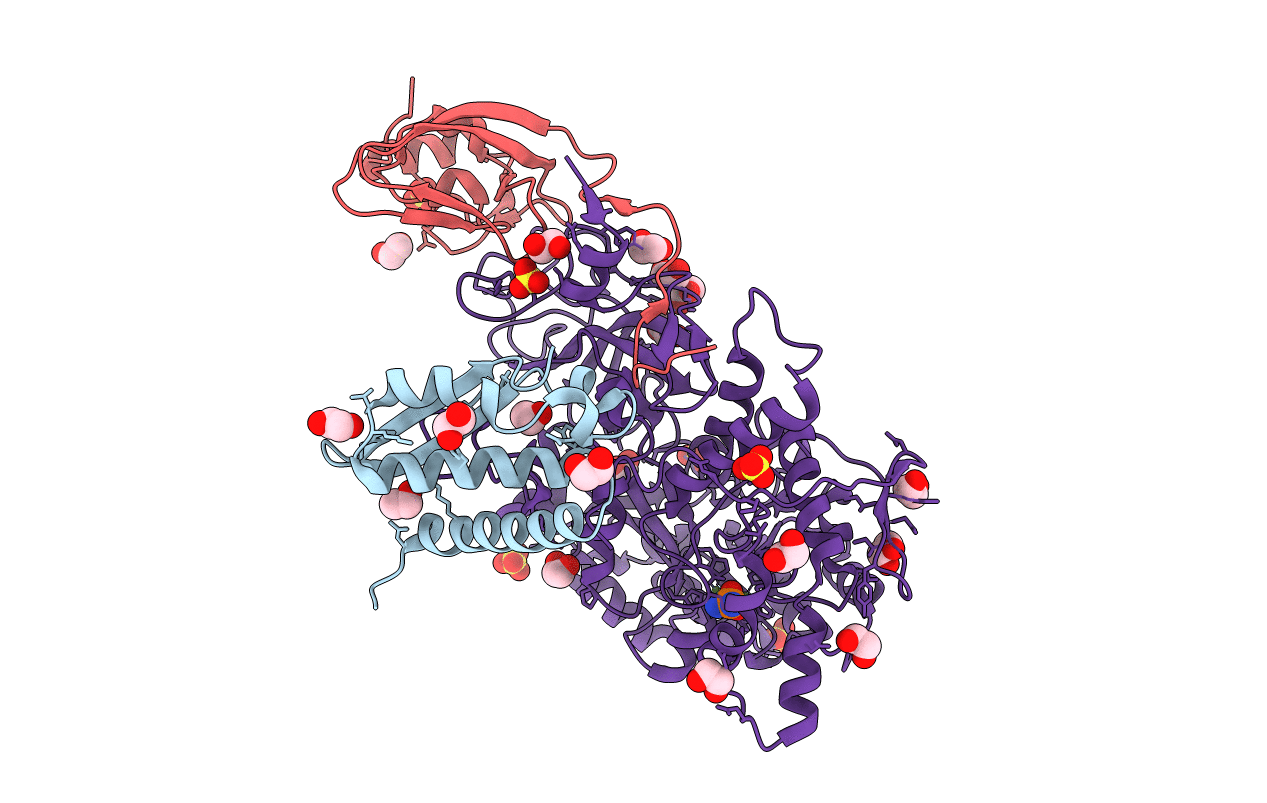
Deposition Date
2019-04-30
Release Date
2020-03-11
Last Version Date
2024-01-24
Entry Detail
PDB ID:
6RKG
Keywords:
Title:
1.32 A RESOLUTION OF SPOROSARCINA PASTEURII UREASE INHIBITED IN THE PRESENCE OF NBPTO AT pH 7.5
Biological Source:
Source Organism:
Sporosarcina pasteurii (Taxon ID: 1474)
Method Details:
Experimental Method:
Resolution:
1.32 Å
R-Value Free:
0.14
R-Value Work:
0.12
R-Value Observed:
0.12
Space Group:
P 63 2 2


